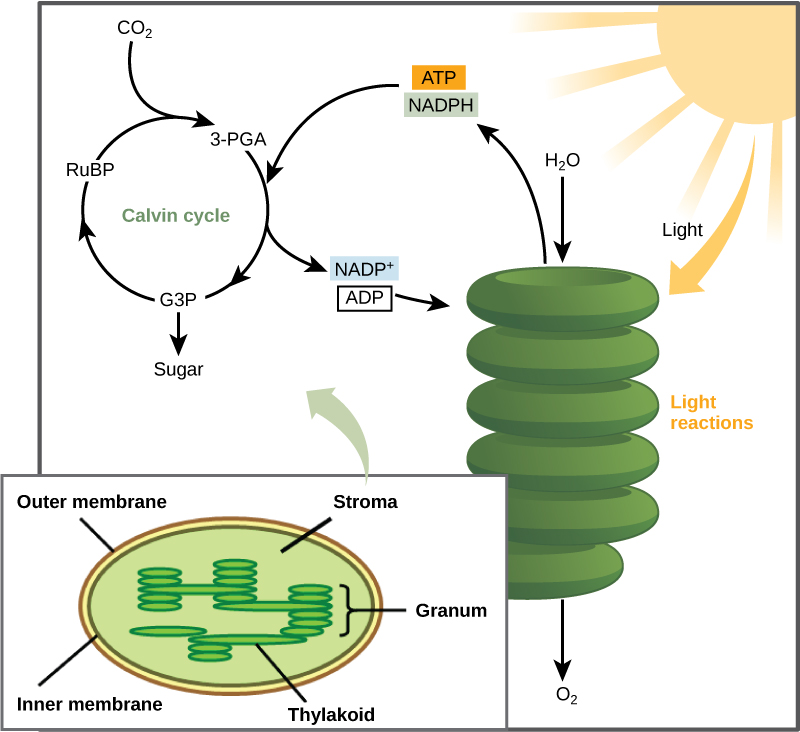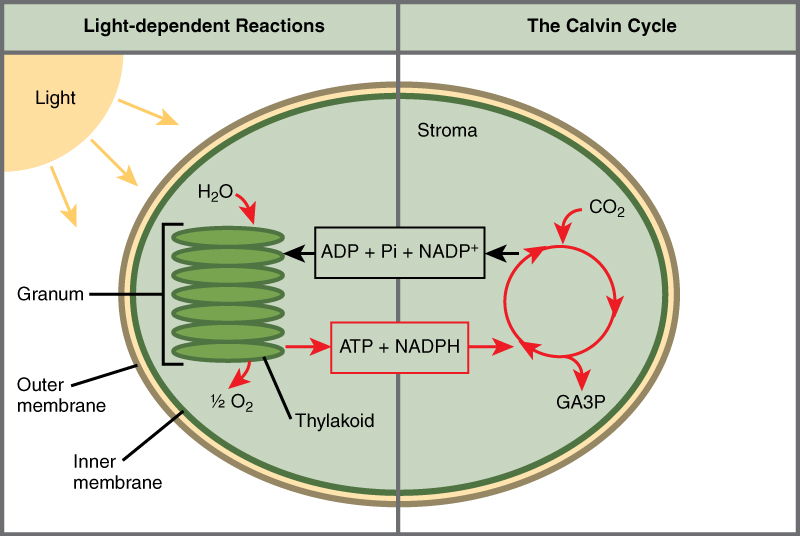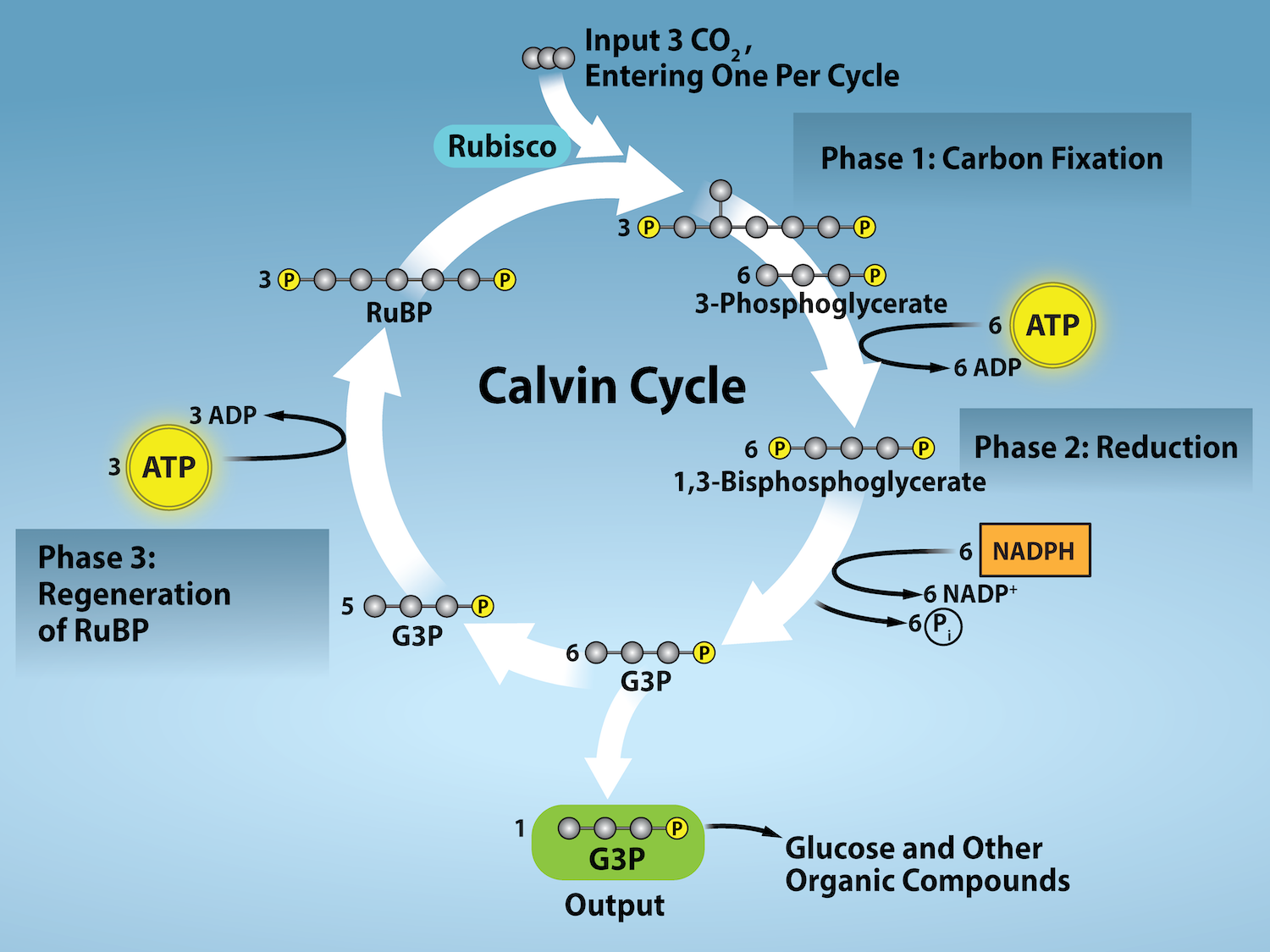What is the importance of the stroma of the chloroplast? This question delves into the heart of photosynthesis, revealing the intricate workings of this vital process within plant cells. The stroma, a semi-fluid matrix within the chloroplast, serves as a dynamic hub for a multitude of biochemical reactions, playing a crucial role in the production of energy and essential biomolecules.
Encased within the chloroplast’s double membrane, the stroma is a complex mixture of enzymes, proteins, and ribosomes. This environment provides the perfect stage for the Calvin cycle, where carbon dioxide is converted into sugars, the foundation of plant growth. Beyond its role in carbon fixation, the stroma is also involved in the synthesis of lipids, amino acids, and other vital molecules, making it a central player in plant metabolism.
The Stroma: The Heart of Photosynthesis: What Is The Importance Of The Stroma Of The Chloroplast
Within the chloroplast, a verdant realm of energy conversion, lies the stroma, a dense, fluid-filled region that serves as the stage for the intricate dance of photosynthesis. It is here, within this vital space, that the sun’s energy is harnessed and transformed into the building blocks of life.
Stroma Structure and Composition
The stroma, a symphony of molecular activity, is enclosed by the inner membrane of the chloroplast, a delicate barrier that separates it from the surrounding cytoplasm. Its structure is a testament to its role in photosynthesis, housing a diverse array of components that orchestrate the intricate processes of carbon fixation.The stroma is a bustling hub of enzymes, proteins, and ribosomes, each playing a crucial role in the intricate dance of photosynthesis.
Enzymes, the catalysts of life, facilitate the biochemical reactions that transform carbon dioxide into sugars. Proteins, the workhorses of the cell, provide structural support and transport molecules across the stroma. Ribosomes, the protein factories of the cell, synthesize proteins essential for the stroma’s function.
The Calvin Cycle: A Symphony of Carbon Fixation
The stroma is the heart of the Calvin cycle, a series of biochemical reactions that convert carbon dioxide into glucose, the fundamental fuel of life. This intricate process, driven by the energy captured from sunlight, is a testament to the remarkable efficiency of nature.
The Calvin cycle, a cyclical pathway, involves a series of enzymatic reactions that transform carbon dioxide into glucose, utilizing the energy captured from sunlight.
The Calvin cycle begins with the fixation of carbon dioxide, a process catalyzed by the enzyme RuBisCo. This enzyme, a key player in photosynthesis, binds carbon dioxide to a five-carbon sugar, ribulose-1,5-bisphosphate (RuBP), initiating a series of reactions that ultimately lead to the production of glucose.The stroma, a vibrant tapestry of molecular activity, is the stage for this transformative process.
It provides the necessary enzymes, proteins, and energy carriers to drive the Calvin cycle, ensuring a continuous supply of glucose for the plant’s growth and development.
Stroma as a Biochemical Hub

The stroma, a viscous fluid within the chloroplast, is far more than just a passive container. It’s a bustling biochemical factory, teeming with enzymes and metabolic pathways that are essential for the life of the plant. Within its watery embrace, the stroma orchestrates the synthesis of vital molecules, connecting the light-dependent reactions of photosynthesis with the intricate web of cellular processes.
The Stroma’s Role in Biosynthesis
The stroma serves as a central hub for the synthesis of sugars, lipids, and amino acids. It is the site of the Calvin cycle, a series of biochemical reactions that utilize the energy captured during the light-dependent reactions to convert carbon dioxide into glucose. This glucose is then used as the building block for a wide range of essential molecules.
- Sugar Synthesis: The Calvin cycle, housed within the stroma, is the primary pathway for carbon fixation. It uses the energy stored in ATP and NADPH, generated during the light-dependent reactions, to convert carbon dioxide into glucose. This glucose is then used as the building block for other sugars, such as sucrose, which is transported throughout the plant.
- Lipid Synthesis: The stroma also plays a crucial role in lipid biosynthesis. Fatty acids, the building blocks of lipids, are synthesized within the stroma using the energy from ATP and NADPH generated during photosynthesis. These lipids are essential for cell membrane formation, energy storage, and signaling.
- Amino Acid Synthesis: The stroma is the site of the synthesis of many amino acids, the building blocks of proteins. These amino acids are derived from the carbon skeletons of sugars produced during the Calvin cycle and are essential for a wide range of cellular functions, including growth, repair, and enzyme production.
Stroma-Thylakoid Interaction: A Symphony of Energy Transfer, What is the importance of the stroma of the chloroplast
The stroma’s metabolic activity is intimately linked to the thylakoid membrane system. The thylakoids, with their internal lumen, are the sites of the light-dependent reactions, where sunlight is captured and converted into chemical energy in the form of ATP and NADPH. These energy carriers then diffuse from the thylakoid lumen into the stroma, where they power the Calvin cycle and other metabolic processes.
The stroma acts as a conduit, channeling the energy captured by the thylakoids into the biosynthetic machinery of the chloroplast.
Metabolic Contrast: Stroma vs. Thylakoid Lumen
The metabolic activities within the stroma stand in stark contrast to those occurring within the thylakoid lumen. The thylakoid lumen is primarily involved in the light-dependent reactions, focusing on the conversion of light energy into chemical energy. The stroma, on the other hand, is the site of carbon fixation, sugar synthesis, and the production of essential building blocks for the plant.
- Thylakoid Lumen: The thylakoid lumen is the site of the light-dependent reactions, where light energy is captured and converted into chemical energy in the form of ATP and NADPH. It is a highly acidic environment, with a low pH, due to the accumulation of protons during the electron transport chain.
- Stroma: The stroma is the site of the Calvin cycle, where carbon dioxide is fixed into sugars. It is a more neutral environment, with a pH closer to 7. The stroma contains a diverse array of enzymes that catalyze the reactions of the Calvin cycle and other metabolic pathways.
Stroma and Chloroplast Development

The stroma, the central hub of the chloroplast, is not just a site of photosynthesis; it is also a dynamic environment that orchestrates the development and division of these vital organelles. The stroma acts as a platform for the assembly of new chloroplast components, ensuring the integrity and functionality of these photosynthetic powerhouses.
Stroma’s Role in Chloroplast Division
The stroma plays a crucial role in the division of chloroplasts, a process known as chloroplast fission. During this process, the stroma provides a platform for the assembly of the machinery necessary for division. This includes the formation of a constricting ring of proteins, known as the FtsZ ring, which acts as a scaffold for the division process. The stroma also provides the necessary enzymes and building blocks for the synthesis of new chloroplast membranes and other components.
The stroma is a dynamic environment that orchestrates the development and division of chloroplasts, ensuring their integrity and functionality.
Stroma as a Platform for Assembly
The stroma acts as a central hub for the assembly of new chloroplast components. It contains the necessary enzymes and building blocks for the synthesis of chlorophyll, the pigment that captures light energy, as well as other essential proteins involved in photosynthesis. The stroma also provides the platform for the assembly of ribosomes, the protein-synthesizing machinery of the chloroplast. These newly synthesized components are then integrated into the growing chloroplast, contributing to its growth and development.
The stroma provides a platform for the assembly of new chloroplast components, ensuring the integrity and functionality of these photosynthetic powerhouses.
The Stroma in Plant Growth and Development

The stroma, a dynamic and multifaceted compartment within the chloroplast, plays a crucial role in plant growth and development. It acts as a central hub for metabolic processes, providing the building blocks for essential biomolecules and contributing to the overall efficiency of photosynthesis. Beyond its role in energy production, the stroma also participates in the regulation of plant responses to environmental cues, ensuring optimal growth and survival in diverse conditions.
Stroma’s Contribution to Biomolecule Synthesis
The stroma is a bustling factory of essential biomolecules, providing the building blocks for plant growth and development. It harbors enzymes that catalyze the synthesis of amino acids, fatty acids, and nucleotides, all vital components of proteins, lipids, and nucleic acids. These biomolecules are crucial for cell division, expansion, and differentiation, driving the growth and development of plant organs and tissues.
- Amino Acid Synthesis: The stroma houses enzymes responsible for the synthesis of amino acids, the building blocks of proteins. These proteins are essential for various cellular functions, including photosynthesis, respiration, and signal transduction.
- Fatty Acid Synthesis: Fatty acids are synthesized in the stroma, serving as structural components of membranes and energy storage molecules. The synthesis of fatty acids is crucial for the development of chloroplasts, the formation of new cells, and the production of seeds.
- Nucleotide Synthesis: Nucleotides, the building blocks of DNA and RNA, are also synthesized in the stroma. These nucleic acids are essential for genetic information storage, replication, and protein synthesis, driving cellular processes that underpin plant growth and development.
Stroma’s Role in Environmental Responses
The stroma is not only a metabolic hub but also a responsive center, adapting to environmental cues and regulating plant growth accordingly. It plays a critical role in plant responses to light, temperature, and nutrient availability, ensuring optimal growth and survival in diverse conditions.
- Light Regulation: The stroma is highly responsive to light intensity and quality. Light signals trigger changes in gene expression and enzyme activity, affecting the rate of photosynthesis and the synthesis of essential biomolecules. For instance, under high light conditions, the stroma can increase the synthesis of protective pigments like carotenoids, mitigating photodamage.
- Temperature Adaptation: The stroma adapts to temperature fluctuations, influencing the efficiency of photosynthesis and the overall growth rate. In response to low temperatures, the stroma may activate specific enzymes and pathways that maintain membrane fluidity and protect against freezing damage. Conversely, high temperatures can trigger the synthesis of heat-shock proteins, protecting cellular components from damage.
- Nutrient Sensing: The stroma plays a role in sensing nutrient availability, particularly nitrogen and phosphorus. When these nutrients are limited, the stroma can adjust the rate of photosynthesis and the synthesis of essential biomolecules, ensuring efficient resource allocation and survival.
Stroma’s Impact on Photosynthetic Efficiency
The stroma is the heart of photosynthesis, facilitating the Calvin cycle, the process that converts carbon dioxide into sugars. Its efficiency directly impacts the overall productivity of plants, influencing their growth and biomass accumulation.
- Enzyme Activity: The stroma houses numerous enzymes that catalyze the reactions of the Calvin cycle. The activity of these enzymes is influenced by factors like light intensity, temperature, and nutrient availability. Optimal enzyme activity ensures efficient carbon dioxide fixation and sugar production.
- Carbon Fixation: The stroma plays a central role in carbon fixation, the process of incorporating carbon dioxide into organic molecules. The efficiency of carbon fixation is influenced by factors like the concentration of carbon dioxide, the activity of enzymes, and the availability of energy from light reactions.
- Stroma’s Role in C4 Photosynthesis: The stroma of C4 plants exhibits unique adaptations for efficient carbon fixation in hot and arid environments. These adaptations include the presence of specialized enzymes and a compartmentalized structure, enabling efficient carbon dioxide capture and minimizing photorespiration.
The stroma, a dynamic and essential component of the chloroplast, is far more than just a passive container. It is a dynamic hub of metabolic activity, orchestrating the synthesis of essential biomolecules and driving the processes that sustain plant life. From the intricate steps of the Calvin cycle to the assembly of new chloroplast components, the stroma stands as a testament to the remarkable efficiency and complexity of nature’s design.
Expert Answers
What is the role of the stroma in the Calvin cycle?
The stroma provides the environment and enzymes necessary for the Calvin cycle, where carbon dioxide is converted into sugars using energy from the light-dependent reactions.
How does the stroma contribute to plant growth?
The stroma produces sugars, lipids, and amino acids, which are essential building blocks for plant growth and development.
What is the relationship between the stroma and the thylakoid membrane?
The thylakoid membrane system within the chloroplast is responsible for capturing light energy. This energy is then transferred to the stroma, where it powers the Calvin cycle and other metabolic processes.






